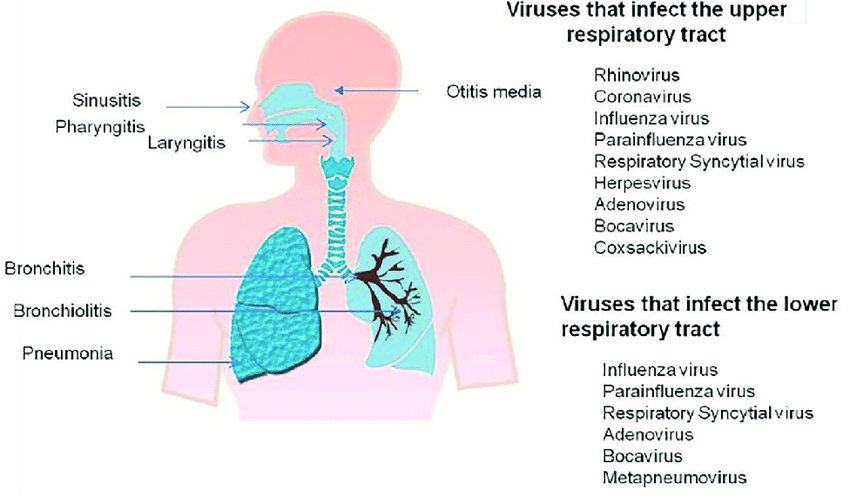Viral Respiratory Infections
Published (updated: ).

Acute respiratory illnesses are the most frequently occurring illness in all age groups globally. Disease is mostly limited to the upper airways and is self-limiting, but a small percentage can progress to lower respiratory tract infections as bronchiolitis and pneumonia. Children and elderly people are at increased risk, especially in developing countries.
The most important etiologic agents of severe lower respiratory illness are bacteria such as Streptococcus pneumoniae and Haemophilus influenzae and viruses such as respiratory syncytial virus (RSV) and influenza virus. Efficacious vaccines are available against the two bacteria and the influenza virus. Viruses are much more important in mild upper and middle respiratory tract infections and in bronchiolitis in children, whereas bacteria are the main cause of pneumonia, especially in adults. Clinical syndromes overlap considerably, and there is increasing evidence of bacterial-viral co-infections and of bacterial pneumonia being secondary to viral respiratory tract infection.
Respiratory syncytial virus (RSV)
Respiratory syncytial virus (RSV) is a very common virus that leads to mild, cold-like symptoms in adults and older healthy children. It can be more serious in young babies, especially those in certain high-risk groups.
Causes
RSV is the most common germ that causes lung and airway infections in infants and young children. Most infants have had this infection by age 2. Outbreaks of RSV infections most often begin in the fall and run into the spring.
The infection can occur in people of all ages. The virus spreads through tiny droplets that go into the air when a sick person blows their nose, coughs, or sneezes.
You can catch RSV if:
- A person with RSV sneezes, coughs, or blows their nose near you.
- You touch, kiss, or shake hands with someone who is infected by the virus.
- You touch your nose, eyes, or mouth after you have touched something contaminated by the virus, such as a toy or doorknob.
RSV often spreads quickly in crowded households and day care centers. The virus can live for a half an hour or more on hands. The virus can also live for up to 5 hours on countertops and for several hours on used tissues.
The following increase the risk for RSV:
- Attending day care
- Being near tobacco smoke
- Having school-aged brothers or sisters
- Living in crowded conditions
Symptoms
Symptoms can vary and differ with age:
- They usually appear 2 to 8 days after coming in contact with the virus.
- Older children most often have only mild, cold-like symptoms, such as a barking cough, stuffy nose, or low-grade fever.
Infants under age 1 may have more severe symptoms and often have the most trouble breathing:
- Bluish skin color due to a lack of oxygen (cyanosis) in more severe cases
- Breathing difficulty or labored breathing
- Nasal flaring
- Rapid breathing (tachypnea)
- Shortness of breath
- Whistling sound (wheezing)
Exams and Tests
Many hospitals and clinics can rapidly test for RSV using a sample of fluid taken from the nose with a cotton swab.
Treatment
Antibiotics and bronchodilators are not used to treat RSV.
Mild infections go away without treatment.
Infants and children with a severe RSV infection may be admitted to the hospital. Treatment will include:
- Supplemental oxygen
- Moist (humidified) air
- Suctioning of nasal secretions
- Fluids through a vein (by IV)
A breathing machine (ventilator) may be needed.
Outlook (Prognosis)
More severe RSV disease may occur in the following infants:
- Premature infants
- Infants with chronic lung disease
- Infants whose immune system does not work well
- Infants with certain forms of heart disease
Rarely, RSV infection can cause death in infants. However, this is unlikely if the child is seen by a health care provider in the early stages of the disease.
Children who have had RSV bronchiolitis may be more likely to develop asthma.
Possible Complications
In young children, RSV can cause:
- Bronchiolitis
- Lung failure
- Pneumonia
